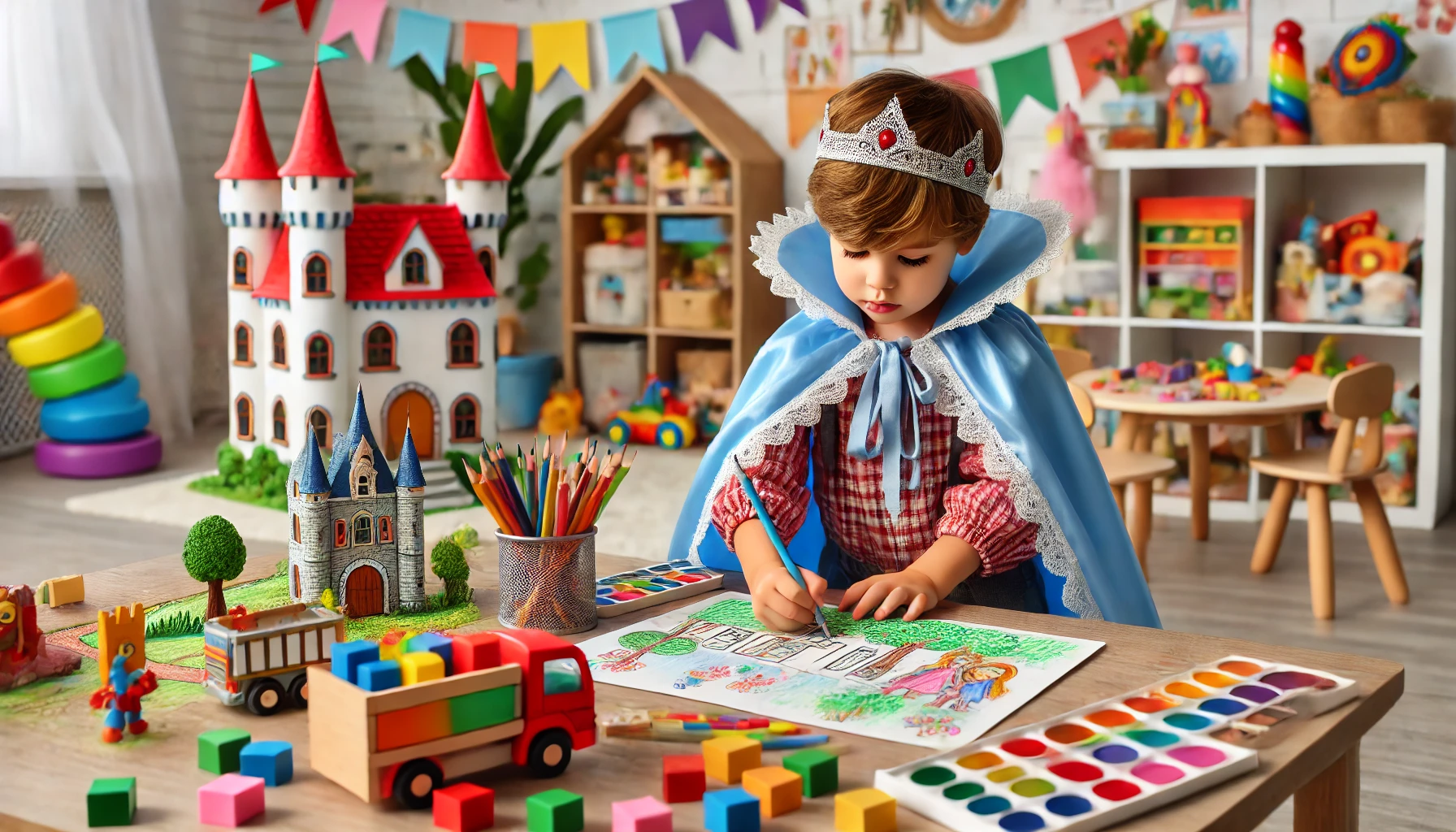Creativity and imagination are essential parts of early childhood development. They allow children to express themselves, solve problems in new ways, and explore the world from different perspectives. Encouraging these skills helps foster innovation, emotional growth, and curiosity. The best part? Young children already have powerful imaginations—our job is to nurture and guide them in healthy, exciting ways.
Why Creativity and Imagination Are Important
- Promotes self-expression and communication
- Builds problem-solving and flexible thinking
- Encourages emotional exploration
- Supports cognitive and language development
- Strengthens confidence and independence
1. Offer Open-Ended Play Materials
The fewer instructions, the more room for imagination.
Activity Idea:
- Provide items like building blocks, dress-up clothes, cardboard boxes, puppets, and craft materials.
- Avoid toys with fixed outcomes—choose items that can become anything your child dreams up.
- Rotate materials regularly to inspire new ideas.
What Kids Learn:
- That their ideas shape their play.
- How to create stories, characters, and inventions.
- That there’s no “right” or “wrong” way to be creative.
2. Encourage Pretend Play
Make-believe is how kids explore emotions, roles, and possibilities.
Activity Idea:
- Set up play scenarios like a pretend grocery store, kitchen, or spaceship.
- Play alongside them, taking on roles and asking questions: “What are we cooking today, chef?”
- Let them lead the story—they’ll surprise you with their ideas.
What Kids Learn:
- Social-emotional skills through role-playing.
- How to think outside the box.
- Language, sequencing, and storytelling.
3. Support Creative Art Without Rules
Let children explore materials without focusing on the end result.
Activity Idea:
- Provide crayons, watercolors, glue, paper, scissors, and recycled materials.
- Say: “Create whatever you want!”
- Display their artwork proudly to show that their imagination matters.
What Kids Learn:
- Freedom of expression.
- How to explore colors, textures, and tools.
- That creativity is about process, not perfection.
4. Make Up Stories Together
Storytelling helps develop language, imagination, and memory.
Activity Idea:
- Start a story and let your child finish it: “Once there was a magical tree that grew…”
- Use pictures, puppets, or drawings to bring stories to life.
- Write your child’s stories down and turn them into a “book.”
What Kids Learn:
- How to organize thoughts and ideas.
- That their voice and creativity are valuable.
- The joy of building a narrative.
5. Encourage “What If” Questions
Creative thinking starts with curiosity.
Activity Idea:
- Ask: “What if animals could talk?” “What if the sky was green?”
- Let them draw or act out their answers.
- Use silly prompts to start a game or art project.
What Kids Learn:
- How to imagine beyond what they see.
- That curiosity leads to discovery.
- Flexible thinking and idea generation.
6. Celebrate Effort Over Outcome
Creativity thrives in safe, supportive environments.
Activity Idea:
- Avoid correcting drawings or stories—focus on what your child imagined.
- Say: “Tell me about your picture,” instead of “What is it?”
- Praise their effort: “I love how you used so many colors!”
What Kids Learn:
- That creativity is valued, not judged.
- Confidence in trying new things.
- Emotional security in their ideas.
7. Read Books That Spark the Imagination
Books transport children to new worlds and possibilities.
Activity Idea:
- Read imaginative titles like Harold and the Purple Crayon or Not a Box.
- After reading, ask: “What would you draw with a magic crayon?”
- Let kids create alternate endings or add new characters to the story.
What Kids Learn:
- That stories are a springboard for ideas.
- Language and descriptive vocabulary.
- The power of imagination in storytelling.
8. Provide Unstructured Time
Creativity often grows in the space between activities.
Activity Idea:
- Set aside daily “free play” time without screens or structured plans.
- Let boredom happen—it can spark great ideas.
- Offer materials but no instructions.
What Kids Learn:
- How to entertain themselves using imagination.
- The ability to focus on their own interests.
- Independence and initiative in creating.
Final Thoughts
Teaching young children about creativity and imagination means giving them space, materials, encouragement, and freedom. Whether it’s through art, storytelling, pretend play, or curiosity, creativity helps kids grow into problem-solvers, thinkers, and innovators. The more we celebrate their ideas, the more they’ll believe in them—and in themselves.
